Welcome back to the Flora alpina, an evolutionary tour of the plants in the Alps.
Previously in the series, we’ve gotten an overview of Alpine plant diversity, stood in awe of the Tree of Life, expanded on the meaning of plant families and Floras, and learned about the evolutionary history of plant sex (trust me, it’s relevant). So far we’ve explored the lycophytes, the weird ferns, the common ferns, the pine family, and other conifers.
This episode is an interlude: an introduction to the rest of the series, i.e., flowering plants.
The invention of flowers (and fruits)
At the time of writing, it’s flower season in the Northern hemisphere. So many of the plants we encounter and cultivate have flowers, it’s easy to assume that all plants have flowers. If you’ve been following this series, you know that this is not the case: we still have with us the descendants of non-flowering plant ancestors, like ferns and conifers. Flowers, and their fruits, had to be invented—that is, they had to evolve.
Once ✨flower✨ was unlocked, to achieve the dominance they enjoy today, the plant lineages who inherited this invention had to diversify: that is, come up with lots of variations that allowed them to thrive in new ways and in new places. This burst of diversification happened fairly recently in evolutionary time—it started during the Cretaceous around 150 mya, but probably didn’t really pick up until after the dinosaurs went extinct.1
Today, around 90% of all land plants are flowering plants, aka angiosperms. We humans couldn’t live without them, and in fact, most life on land has come to depend on them: as sources of food, as habitat, as modifiers of the landscape and climate.
What’s so great about flowers? Like other key innovations marking deep branches in the plant tree of life—embryos, spores, seeds—flowers are about reproduction: increasing its success rate and turbocharging its adaptability.
Flower anatomy
Flowers are custom, modular houses for plant sex. They have four basic units, or whorls—sepals, petals, stamens, and carpels—that are mixed and matched in every imaginable way among the world’s 300,000 angiosperm species. The outer whorls, petals and sepals, can be adapted for all kinds of purposes, especially attracting pollinators (who have done a lot for angiosperm success). The inner whorls contain male and female (either or both) reproductive organs: the male stamens with anthers that make pollen, and the female carpel, which has a sticky stigma that receives the pollen and guides its sperm to the egg inside the ovule(s). Together, the female parts make up a pistil, the base of which is an ovary2.

Bonus: pollen and ovules are actually tiny houses for tiny plant children, gametophytes, that grow from spores inside their parents, the sporophytes (the forms we think of as plants). The tiny gametophytes are the ones that do the sex to make a sporophyte embryo housed in a seed. For a rabbit hole into this extra dimension, read my earlier post on seeds and spores.
Fruit diversity
Fertilized, the ovules inside the ovary become seeds, and the ovary swells into a fruit. Fruits are all about seeds: housing them and spreading them. (Thus angiosperm: Greek for vessel + seed.) Fruits are highly adaptable containers, taking forms ranging from the tight, dry bean pod to the winged maple samara to the juicy peach.
Fruit anatomy and classification arises from how they develop from different parts of the flower, mixing and matching layers and parts.3 For example, pomes—apples, pears—have a central core with layers resembling other simple fruits, but they’re hidden by a fleshy outer layer that develops from the base of the flower. Fruits can also be aggregate, like raspberries, made up of lots of pistils fused together; or accessory, like strawberries, with extra flesh developing around undeveloped ovaries. Dry fruits may pop open or stay closed; they might take any number of forms from a rather beautiful glossary of types: nut, capsule, achene, silique, samara…
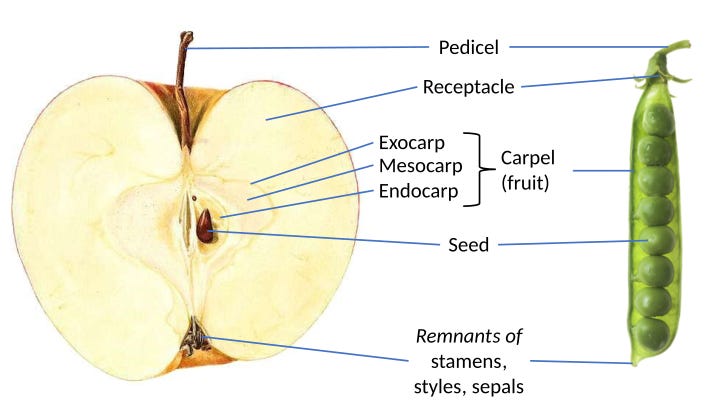
Another nice illustration of a few fruit types here
The earliest flowers
We have good reason to believe that all this diversity descended from a single lineage of flower-bearing plants that cropped up millions of years ago. But it’s surprisingly difficult to reconstruct what those early flowering ancestors might have looked like. The so-called “stem” of the angiosperm branch of the plant tree of life (which leads through time to the “crown” of modern diversity) is lost in the dark of time.

All we really know about angiosperm evolution comes from the evolutionary relationships of the array of species alive today, and from fossils. Flowers don’t always preserve well as fossils, however, and the earliest ones we’ve found seem to show up in the fossil record virtually all at once, already well into evolutionary diversification. Darwin called this abrupt abundance of angiosperm fossils, or rather the rapid evolution it seems to represent, an “abominable mystery.”
Modern flowers have undergone a lot of changes since then, making it difficult to extrapolate backwards. But there have been a few candidates for “closest thing to ancestral flowers” coming from the “oldest” angiosperm lineages, also known as the basal angiosperms. These are angiosperms that split from the rest of the tree before the full diversity of modern flower traits evolved—similar to the way ferns split from the tree before seeds evolved, so they only have spores to work with.
For example, a weird, obscure plant endemic to New Caledonia, called Amborella, is likely the oldest living branch of the angiosperm tree. It has tiny, brownish-white, unisexual flowers. So were primitive flowers small and unshowy? Or were they like magnolia flowers, with big, undifferentiated petal-sepals (tepals) and tons of stamens and carpels all spiraled together? Or were they like the water lilies, also showy and bisexual, but aquatic? Or nothing like any of these?
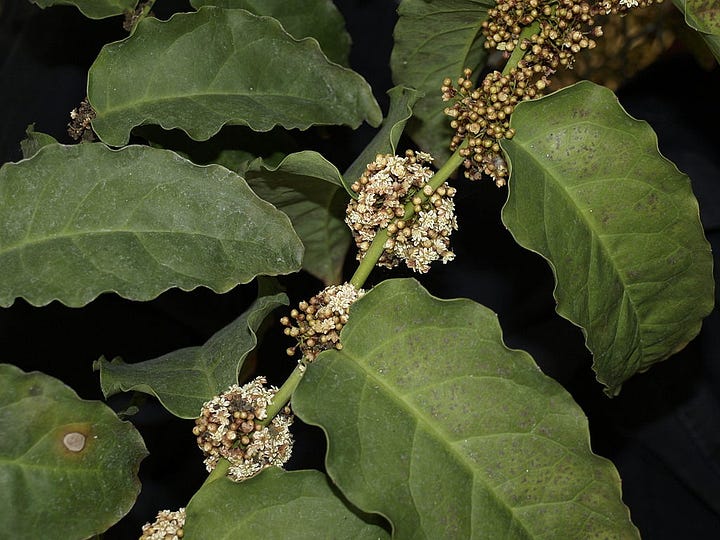

The idea that’s gotten the most press recently came from a study (Saquet et al., 2017) that used an algorithm to crunch numbers based on the floral traits found in all the plant groups across the Angiosperm Tree of Life, trying to wind back through time the most likely evolutionary paths followed by each branch (a technique called ancestral trait reconstruction). Their computer model came up with this large, many-parted flower:

It’s no more than a well-informed guess, but suggests an ancestor more like the magnoliids than Amborella.
Diversification
Whatever the first flowers looked like, in the meantime, angiosperms got busy evolving. One driving force of their evolution was likely coevolution with animal pollinators and seed dispersers. Flowers and fruits became increasingly tailored to attract their services, while animals (especially insects) tailored themselves to this lucrative new business.
An important invention on this front was the bilateral (or zygomorphic) flower plan: instead of being symmetrical all around (radial symmetry), the top and bottom halves of the flowers could have different shapes, specializing into weird pollinator tricks—orchids that look like female bees for males to cozy up to, or long nectar spurs that require pollinators to shove their long tongues down inside.
Many fruits evolved to be bigger and richer to tempt mammals and birds to carry them away and improve their progeny’s chances of colonizing new places.
Pollinator specificity and fruit dispersal are good for outcrossing: avoiding self-pollination and expanding the gene pool as pollinators travel to other plants of the same species or as dispersers carry seeds away from close kin. More genetic diversity = more chances to evolve while also diluting bad mutations.
However, not all plants rely on animal pollinators and dispersers; others got creative with the wind, making catkins full of pollen to blow far and wide, or fruits with wings to helicopter to new ground.
Angiosperms also accumulated some other new features that make them good at claiming ecological space, like improved water-conducting cells (xylem vessels), higher photosynthetic capacity, and something called double fertilization, where fertilized seeds get an extra nutrition boost from a requisitioned developmental cell (the endosperm). But it’s the intense diversity of forms and innovations of flowers and fruits that really stands out.
The angiosperm tree of life
The rest of the Flora alpina series will climb through the copious branches of all this angiosperm diversity in the Alps. These branches have diverged from each other in interesting ways over time, and can grouped into several large sections. After the handful of branches that make up the basal angiosperms, there are two major divisions in the tree, the monocots and eudicots.
These groups can be further subdivided into many levels of subgroups, including orders (-ales) and, below that, families (-aceae). I originally planned to organize posts around families, as described in this post. There are around 115 angiosperm families represented in the Alps (almost 100 of which are eudicots), and around 60 orders—too many for me to do justice to. Some less diverse families are easy to lump together at the level of order (as I’ve mostly done so far); others deserve multiple posts on their own.
We’ll see how it goes. For now, below is a sample of notable groups I hope to cover in the rest of the Flora alpina series.
(For a nice phylogeny summarizing all these relationships, see this poster.)
Basal angiosperms
I already introduced the basal angiosperms briefly above. These “weird” angiosperms include Amborella trichopoda, an extra weird species alone in its genus, family, and order; Austrobaileyales, an order including star anise (Illicium verum); Nymphaeales, the water lilies; magnoliids, comprising several orders including magnolias and laurels; and Chloranthales, a tropical order I know nothing about.
Only Nymphaeales and a few magnoliids are present in the Alps.
Monocots
Monocots are defined by having a single seed leaf, or cotyledon (hence mono + cot4), and leaves with parallel instead of branching veins. This group includes many familiar and important-to-humanity plants such as grasses (which covers most major food crops: rice, corn, wheat, sugar; not to mention pasture grasses…), palm trees, orchids, lilies, tulips, irises, daffodils, onions, and bananas. Monocot flowers can take many forms—showy and elaborate like irises, or tiny and petal-less like grasses (yes, grasses have flowers!)—but typically have two sets of three tepals.
Notable monocot orders in the Alps
Alismatales: an order including the water plantains and other aquatic monocots, and the arum family, Araceae.
Asparagales: daffodils (Amaryllidaceae), irises (Iridaceae), and orchids (Orchidaceae).
Liliales: lilies, tulips, fritillaries (Liliaceae).
Poales: grasses (Poaceae), rushes (Juncaeae), sedges (Cyperaceae). These groups are highly diverse, but often difficult to identify to the species level.
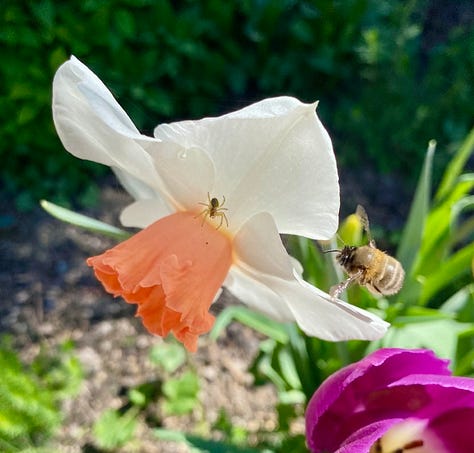
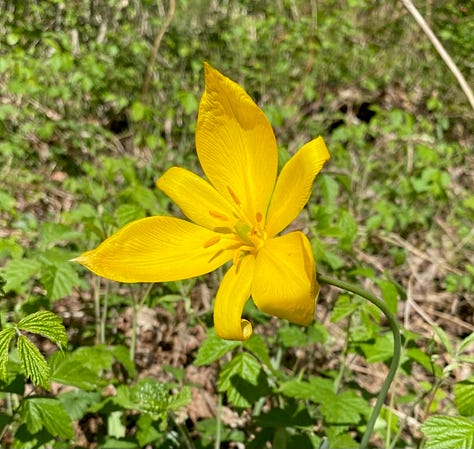
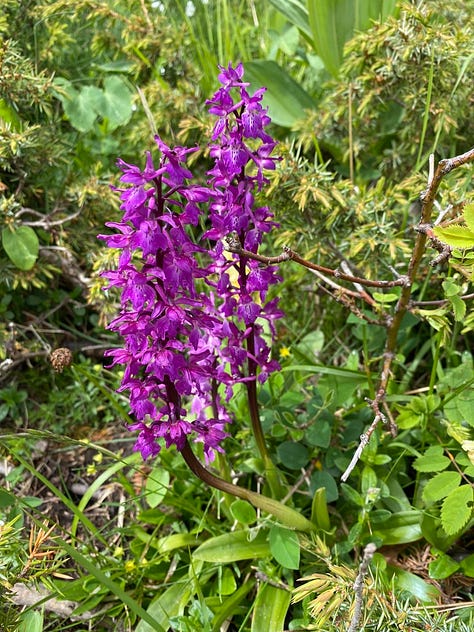
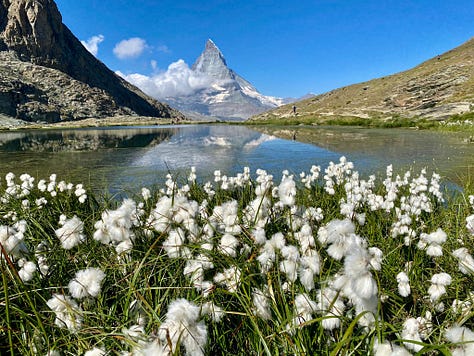
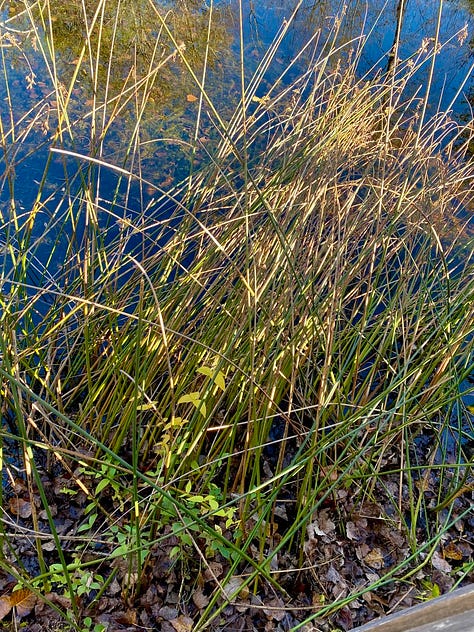
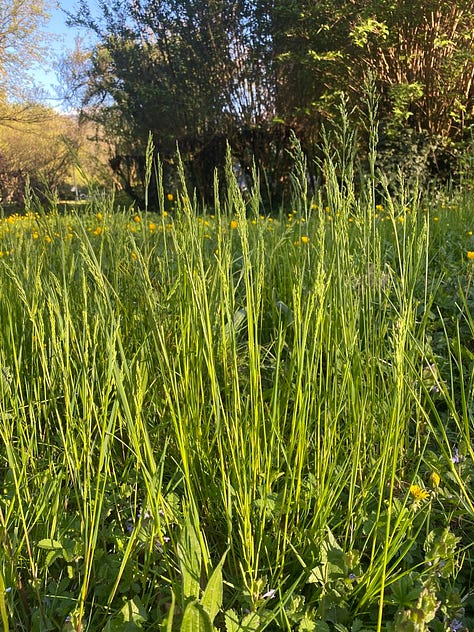
Eudicots
The eudicots cover bascially everything else. These are plants with two seed leaves5, leaves with branching veins, and flowers typically wearing petals and sepals in neat fours and fives. Otherwise, the group is hard to summarize. The eudicots have been divided further into high-level groups like “asterids” and “rosids” and “fabids” but those names have never really meant much to my brain, because they’re still so diverse they don’t always resemble each other in obvious ways; same with eudicot orders. So I tend to think about eudicots at the family level.
Notable eudicot families in the Alps
(Far from exhaustive!)
Ranunculaceae: the buttercup family, a sort of “weird eudicot” that branched early. Ranunculus (the buttercup genus) is an example of an alpine radiation, a cluster of species that diversified in the mountains. Also includes larkspur, anemone, clematis, and columbine.
Fabaceae: the legumes. Beans, peas, clover, vetch, lupines, and other plants with pods for fruit. They have a nutrient-factory superpower also known as “fixing nitrogen.”6
Fagaceae: the beech family. Beech trees (Fagus) are dominant in lower altitude forests; also includes oak (Quercus) and chestnuts (Casteana).
Rosaceae: the rose family. There are ~35 species of rose (genus Rosa)7 in the Alps, but the family includes much more, notably garden fruits including blackberry and raspberry (Rubus), strawberry (Fragus), pear (Pyrus), apple (Malus), and the Prunus fruit basket: peach, apricot, plum, almond, and many cultivated and wild varieties of cherry.
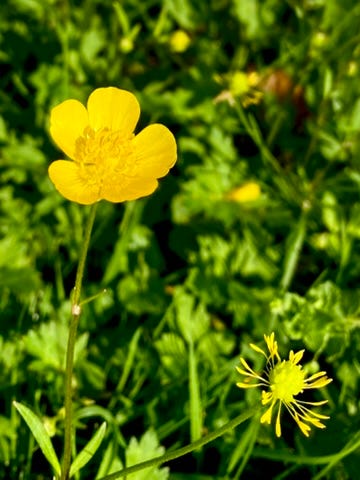
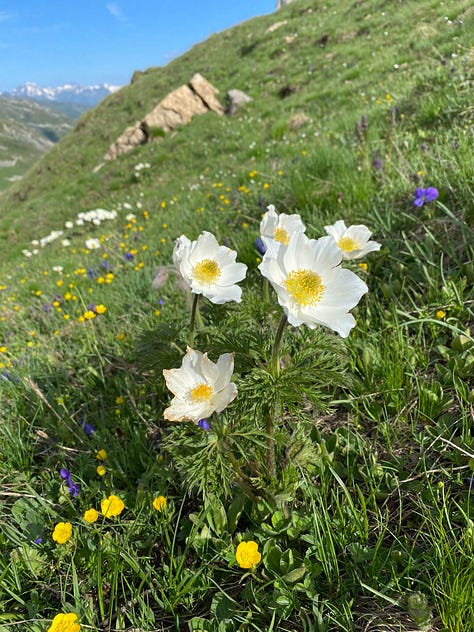


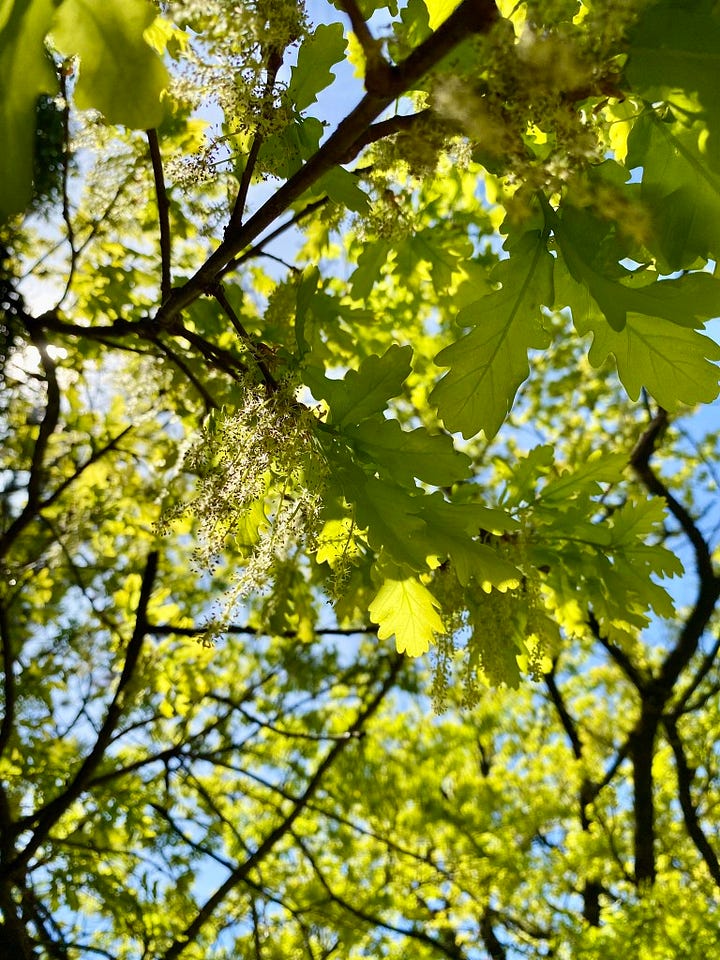

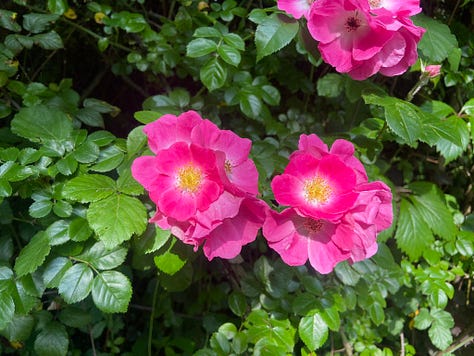
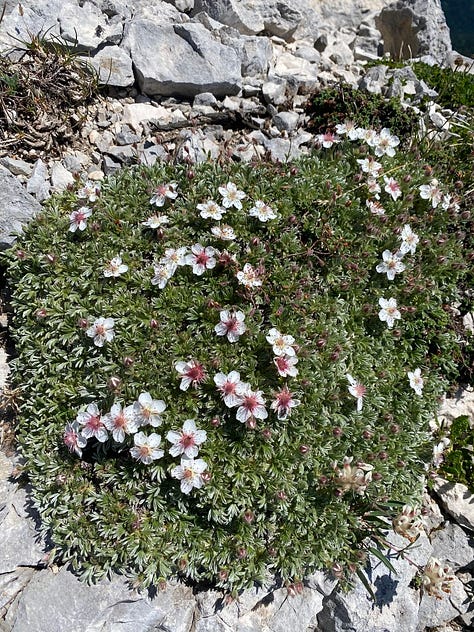
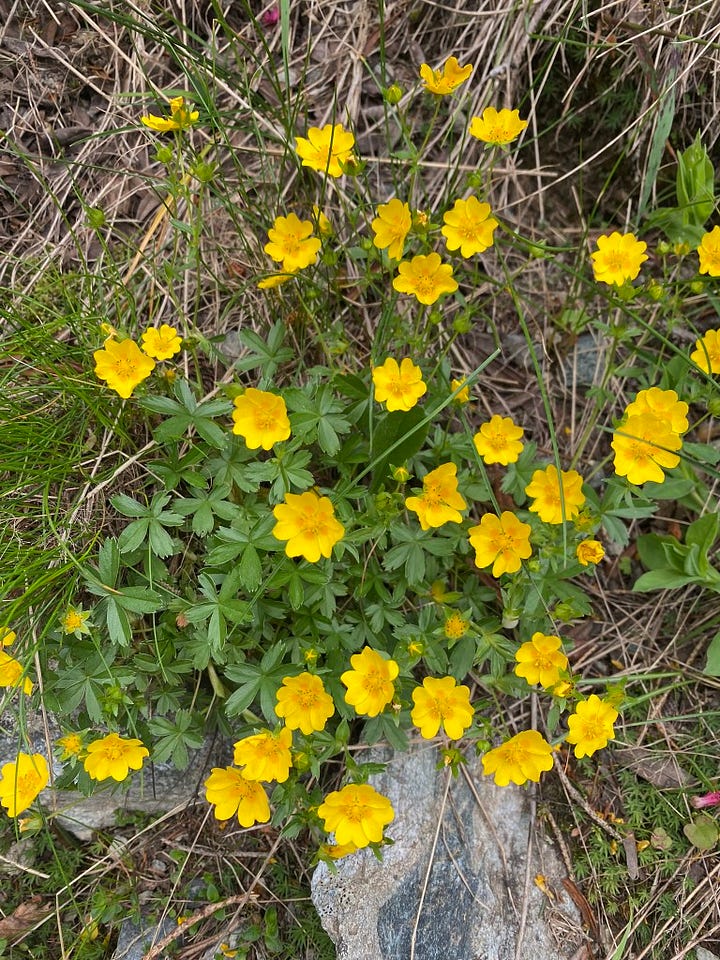

Brassicaceae: the mustard family, with four-petalled flowers and fruits shaped like little rods or discs (siliques). Includes lots of rather obscure forbs8; some might be familiar to gardeners: Ersyimum (wallflower), Alyssum, Draba. Notably, a single species, Brassica oleracea, is the source of many garden cultivars: broccoli, cauliflower, cabbage, brussels sprouts, and kale—but doesn’t occur in the wild in the Alps.
Caryophyllaceae: the pink family, as in pinking shears, since the flowers often have zig-zag edges.9 Mostly five-petaled meadow flowers like Silene and Dianthus.
Ericaceae: the heath family. Alpine rhododendron and bilberry (Vaccinum myrtillus) are abundant in subalpine shrublands.
Primulaceae: the primrose family, with two alpine radiations, Primula (the primroses) and Androsace (which includes some cool high-alpine cushion plants like the one featured in my intro to alpine plant diversity).
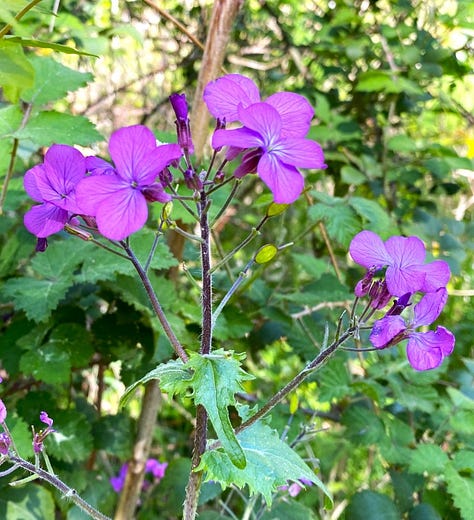
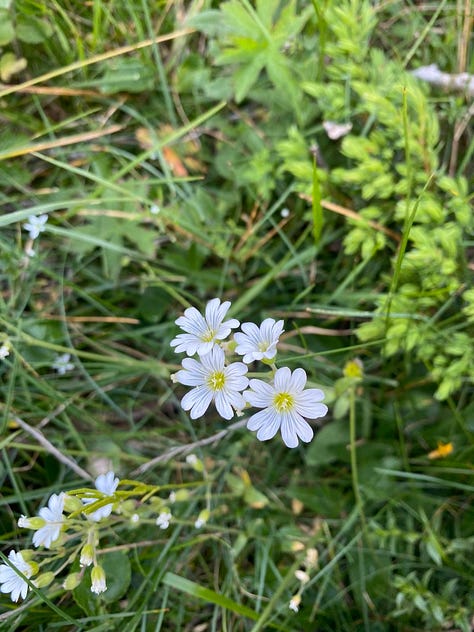



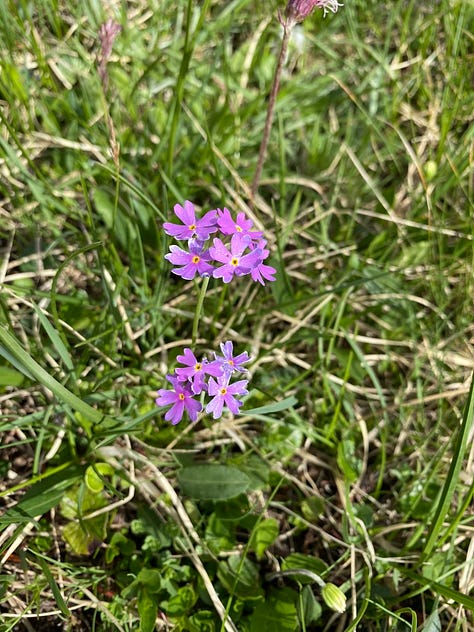
Boraginaceae: the forget-me-not family, often with furry stems and tubular flowers—many of them purple and blue—including those cute little forget-me-nots, Myosotis.
Gentianaceae: the gentian family features an alpine radiation, Gentiana, trumpet-shaped flowers ranging from deep indigo to yellow.
Lamiaceae: the mint family, plants with aromatic oils and fuzzy square stems, including herbs like mint, peppermint, spearmint, thyme, oregano, rosemary, lavender, salvia, and less garden-y ones like woundwort, self-heal, and dead-nettle.
Apiaceae: the carrot family. Flowers often have lacy umbels, or collections of tiny flowers in an umbrella shape. In addition to carrots, includes coriander, parsley, fennel, dill, celery, hemlock, parsnip, and Queen Anne’s lace (wild carrot).


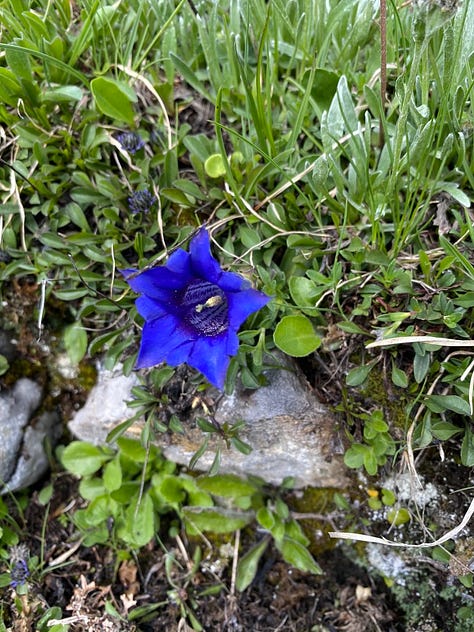

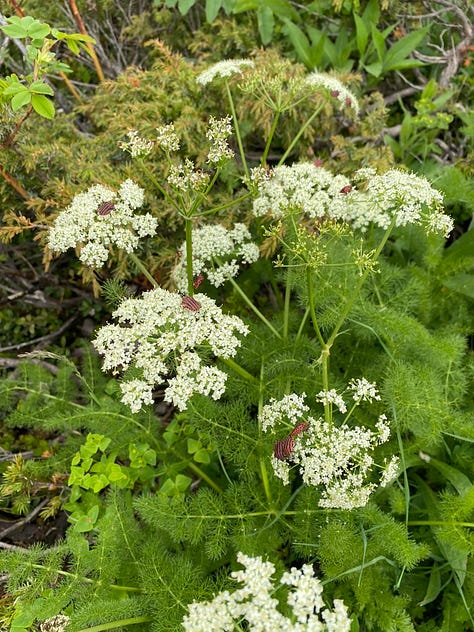
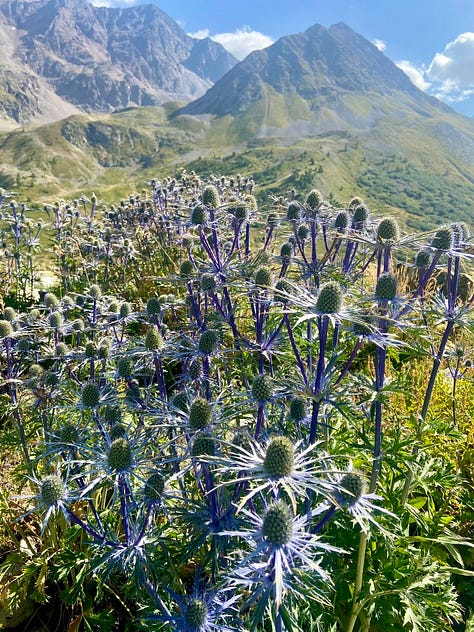
Asteraceae: the sunflower family, the most diverse family in the Alps (and globally), making up 12% of the Flora alpina (rivaled by Poaceae, the grasses, at 8%). These flowers are composite: a bunch of smaller flowers make up what appears to be one big flower. Daisies, asters, thistles, dandelion, burdock, sunflowers, cornflower, edelweiss, and many many more.


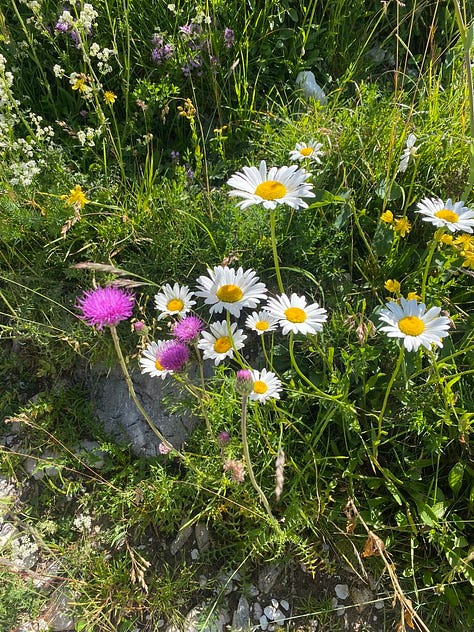
And so we embark on the Alpine angiosperm journey! Watch this space for the next Flora alpina post highlighting the basal angsioperms.
Benton et al., 2021, New Phytologist
The terms for the different parts of the female whorl, or gynoecium, are super confusing because they can be fused together in different numbers and methods. Pistils can be made up of multiple carpels, and there can be multiple pistils, etc. This does come into flower identification and fruit anatomy, but it’s not worth fussing over the details.
Botanical classification of fruits can have entertaining results, such as the fact that the definition of a berry includes bananas and pumpkins, but not raspberries or strawberries.
Technically the full word is monocotyledon but no one says that.
Eudicot has the “eu” added to the name to separate them from the basal angiosperms which also have two seed leaves but are evolutionarily separated from this core, monophyletic group of dicots.
To fix nitrogen basically means building/packaging plant-ready nitrogen from the raw minerals in the air/soil through collaboration with bacteria living in their roots—most plants rely on nitrogen that’s already been assembled elsewhere, which is often a limited resource in the soil.
All wild roses have five-petaled flowers, btw; the many-petaled ones in our gardens are in fact mutants.
Forb = any herbaceous plant that isn’t a grass.
The flowers called pinks (Dianthus) are often also pink in color, and apparently the color might have been named for the flower.






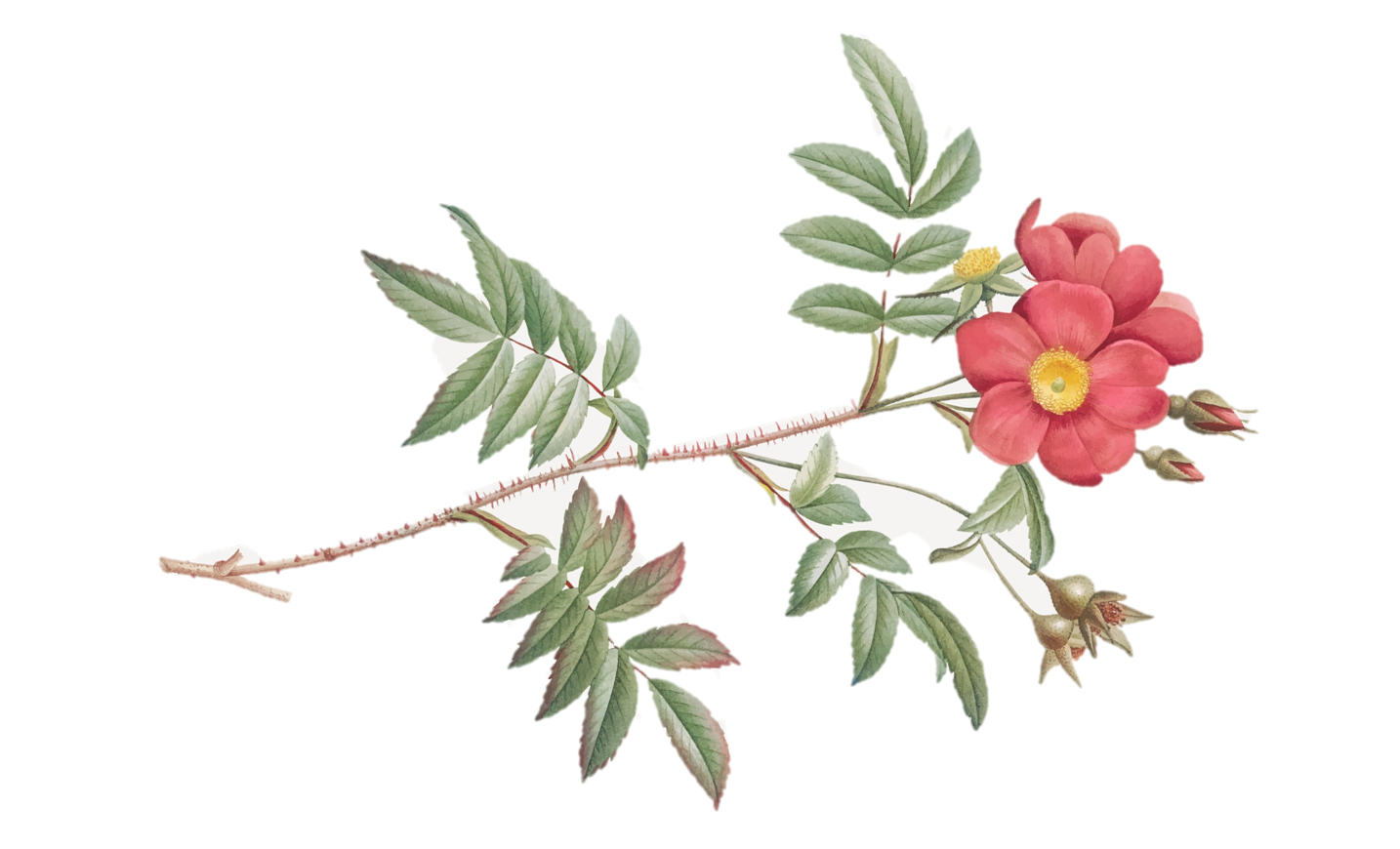
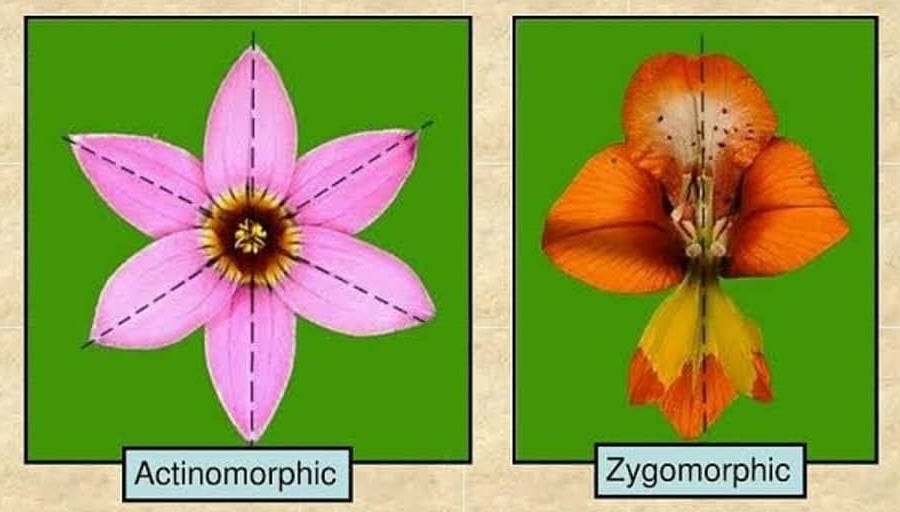
"as in pinking shears, since the flowers often have zig-zag edges" -- wow!
Thanks for solving this mystery!!
Such amazing variety. Beautiful pictures. Your descriptions help me appreciate the flowers even more!